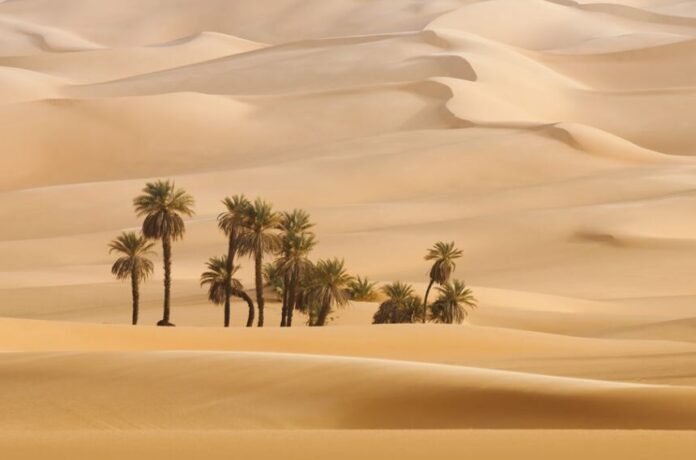In a stunning discovery, scientists have uncovered evidence that the arid Arabian Desert in Saudi Arabia was once a vibrant, green paradise teeming with life, including hippos, crocodiles, and flowing rivers. Far from the barren sands we know today, this region was a thriving ecosystem millions of years ago, sustained by alternating wet seasons that transformed the landscape into a haven for wildlife, according to a new study published in Nature Geoscience.
The breakthrough came from an unlikely source: cave crystals. These shimmering formations, found deep within Saudi caves, act as natural time capsules, preserving ancient raindrops and chemical signatures from long-lost climates. By analyzing these crystals, researchers reconstructed the desert’s climatic history, revealing it experienced cycles of monsoons and winter storms that fueled lush vegetation and supported diverse animal life. The presence of hippo and crocodile fossils further confirms the region was once dotted with rivers and wetlands, a stark contrast to its current desolation.
Also Read: Mars Had Flowing Water Just 742 Million Years Ago, Scientists Confirm
“This discovery rewrites the story of the Arabian Desert,” said Dr. Amina Saleh, a lead paleoclimatologist on the study. “We’re talking about a landscape that swung between dry spells and lush, wet seasons, creating a dynamic environment where large animals thrived.”
The findings highlight the desert’s climatic volatility over millions of years, driven by shifting global weather patterns. While the hippos are long gone, the research offers a glimpse into Earth’s ever-changing environments and underscores the dramatic transformations landscapes can undergo. So, the next time someone calls deserts dull, point to the Arabian sands—once nature’s playground, where hippos wallowed and rivers ran free.
Key Points: Arabian Desert Was Once a Hippo Paradise
- Lush Past Uncovered: The Arabian Desert in Saudi Arabia was once a green, vibrant ecosystem with rivers, trees, and wildlife, including hippos and crocodiles.
- Cave Crystal Evidence: Scientists used cave crystals, preserving ancient raindrops, to reveal the desert’s wet climate history, as detailed in Nature Geoscience.
- Cyclic Wet Seasons: The region experienced alternating monsoons and winter storms over millions of years, supporting diverse flora and fauna.
- Fossil Confirmation: Hippo and crocodile fossils indicate the presence of rivers and wetlands, contrasting the desert’s current arid state.
- Climatic Volatility: The findings show the desert’s dynamic environmental shifts, driven by global weather pattern changes.
- Rewriting History: The discovery challenges perceptions of deserts, highlighting the Arabian Desert’s past as a thriving, life-filled landscape.



